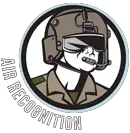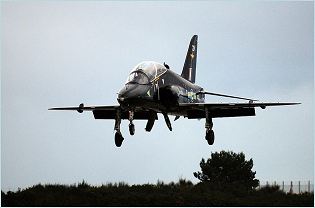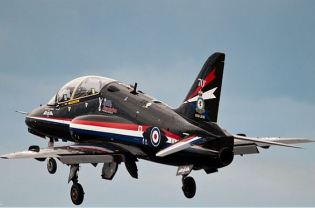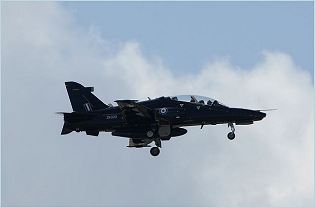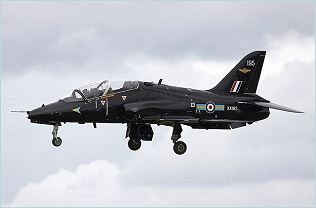| |
||||||||||||||||||||||
| a | ||||||||||||||||||||||
Hawk
Advanced jet trainer aircraft |
||||||||||||||||||||||
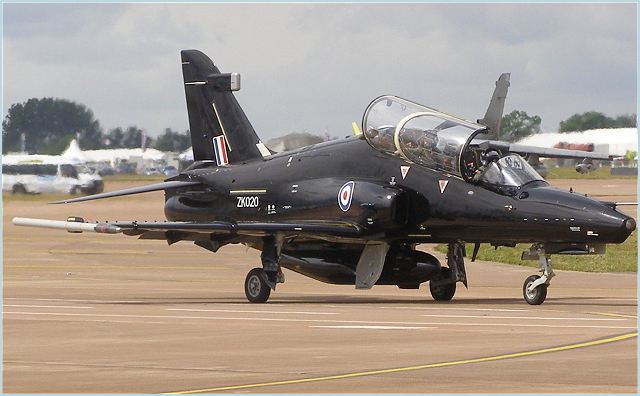 |
||||||||||||||||||||||
| |
||||||||||||||||||||||
The
BAE Systems Hawk is a British single-engine, advanced jet trainer aircraft.
It first flew in 1974 as the Hawker Siddeley Hawk, and subsequently
produced by its successor companies, British Aerospace and BAE Systems,
respectively. It has been used in a training capacity and as a low-cost
combat aircraft. At the centre of an integrated training system, the
Hawk features the very latest in advanced simulation for radar, weapons
and defensive aids training. The Hawk combines a proven aircraft, fully
integrated training system and an optimised package of support measures
to deliver them in the most cost-effective and flexible way possible.
The aircraft benefits from an ongoing development programme designed
to enhance its capabilities and incorporate new features arising from
the experience of five-million design hours and over two-million flying
hours. The United Kingdom, India, Bahrain and South Africa all selected
the latest version Hawk AJT to meet their advanced jet trainer requirements.
The Hawk AJT has been developed to provide the ideal platform for training
the next generation of frontline pilots. With a cockpit akin to the
latest in frontline aircraft, the Hawk AJT also features capabilities
including: Traffic Collision Avoidance System (TCAS) - the first advanced
jet trainer to do so; and Ground Proximity Warning System (GPWS). |
||||||||||||||||||||||
| Variants: | ||||||||||||||||||||||
| - Hawk 50:
was the original export trainer version, and offered a limited attack
capability. Finland, Indonesia and Kenya ordered 90 of this variant - Hawk 60: export version, replacing the Hawk 50, intended for conversion and weapons training. Weapons carriage is increased. It is a two-seater, has uprated Rolls-Royce Adour 861 engines, and is capable of a level speed at altitude of 1028 km/h or Mach 0.84 - Hawk 100: two-seat advanced weapons trainer with additional avionics, an optional forward looking infrared, a redesigned wing and HOTAS. - Hawk 120: The Hawk Lead-in Fighter Trainer (LIFT) is the version selected by the South African Air Force in December 1999. This variant is powered by the Adour 951. The LIFT benefits from development carried out for the Australian Mk. 127. - Hawk 127: The Royal Australian Air Force ordered 33 Hawk 127 Lead-in Fighters (LIFs) in June 1997, 12 of which were produced in the UK and 21 in Australia. This variant is also powered by the Adour 871. - Hawk 128: is the new Advanced Jet Trainer (AJT) for the RAF and Royal Navy. The Mk. 128 includes modern LCD displays instead of conventional instrumentation and is powered by the Rolls-Royce Adour 951 engine. - Hawk 132: is the latest export variant of the Hawk and was previously known as the Mk. 115Y. BAE Systems delivered the final of 24 UK-built Hawks to the IAF in November 2009. These aircraft will be powered by the Rolls-Royce Adour Mk 871 engine.[99] - Hawk 165: is an export variant of the AJT currently on order by the Royal Saudi Air Force. The 22 aircraft are to be built in the UK by BAE. - Hawk 200: is a single-seat, lightweight multirole combat fighter with emphasis on air defence, air superiority, anti-shipping, air-denial, long-range interdiction, short-range close air support and ground attack. |
||||||||||||||||||||||
| Technical Data | ||||||||||||||||||||||
| Design | ||||||||||||||||||||||
The
Hawk is an advanced trainer with a two-man tandem cockpit, a low-mounted
cantilever wing and is powered by a single turbofan engine. Unlike many
of the previous trainers in RAF service, the Hawk was specifically designed
for training. Hawker had developed the aircraft to have a high level
of servicability, as well as lower purchasing and operating costs than
previous trainers like the Jet Provost. The Hawk has been praised by
pilots for its agility, in particular its roll and turn handling. The
design of the fuselage included a height differential between the two
seats of the cockpit; this provided generous levels of visibility for
the instructor in the rear seat. The Hawk is an all-metal, low-wing,
tandem seat aircraft of conventional design. The wing has a moderate
sweep with 2º dihedral and trailing edge slotted flaps. A one-piece
all-moving tailplane is also swept back with 10º dihedral. The
fuselage comprises three main parts. The front fuselage accommodates
two equipment bays and a pressurised cabin containing two tandem cockpits.
The centre fuselage contains the engine, a fuselage fuel tank, a gas
turbine starting system and a ram air turbine; the latter providing
emergency hydraulic power should the two normal hydraulic systems fail.
The rear fuselage houses the jet pipe bay and an airbrake hinged to
its under surface. |
||||||||||||||||||||||
| Avionics and training system | ||||||||||||||||||||||
The
Hawk three, full color, multi-function displays similar to those used
by modern fighters such as Typhoon are used to display navigation, weapon
and systems information. The aircraft's head-up display (HUD) has been
updated to use symbols and data used in more current combat aircraft.
Latest Hawk variant include 'Hands-On-Throttle-And-Stick' (HOTAS) controls
which are fully representative of front line combat aircraft types,
and twin mission computers hosting simulations of a wide range of sensor
and weapon systems as well as a full featured IN/GPS navigation system
with moving map display. The electronic warfare systems include a radar
warning receiver and automatic or manually operated chaff and flare
dispensers. The latest version, the Hawk 200 is equipped with a Northrop
Grumman APG-66H multi-mode radar, LINS 300 ring laser gyroscope inertial
navigation system, air data sensor, display processor and mission computer.
The systems are interconnected by dual redundant digital bus. |
||||||||||||||||||||||
| Propulsion | ||||||||||||||||||||||
The
Hawk 60, powered by an Adour mk861 turbofan engine, provides air combat
manoeuvring and weapon conversion training. The Hawk 200 is powered
by an Adour 871 twin-spool, low bypass ratio turbofan engine from Rolls-Royce.
|
||||||||||||||||||||||
| Armament | ||||||||||||||||||||||
The
Hawk can be equipped two under-wing pylons cleared to carry Sidewinder
AIM-9L air-to-air missiles, and can carry a 30mm Aden cannon in a pod
underneath the fuselage centre-line. The cannon can be fired at the
same time as any of the pylon-mounted weapons are selected for release
or firing. Aiming facilities for the aircraft’s attack modes are
provided by an integrated strike and interception system, while a Vinten
video recording system is used to record the weapon sighting. - 1× 30 mm ADEN cannon, in centreline pod - Up to 6,800 lb (3,085 kg) of weapons on five hardpoints, including: 4× AIM-9 Sidewinder or ASRAAM on wing pylons and wingtip rails - 1,500 lb (680 kg), limited to one centreline and two wing pylons (Hawk T1) |
||||||||||||||||||||||
| Specifications | ||||||||||||||||||||||
|
||||||||||||||||||||||
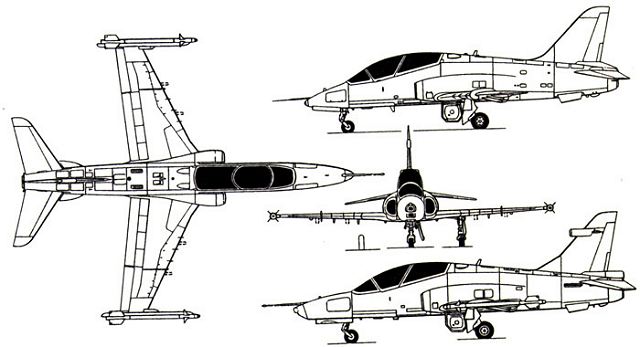 |
||||||||||||||||||||||
|
||||||||||||||||||||||
| |
||||||||||||||||||||||
Hawk AJT advanced jet trainer aircraft technical data sheet specifications intelligence description information identification pictures photos images video United Kingdom British Royal Air Force defence industry technology
- Posted On
